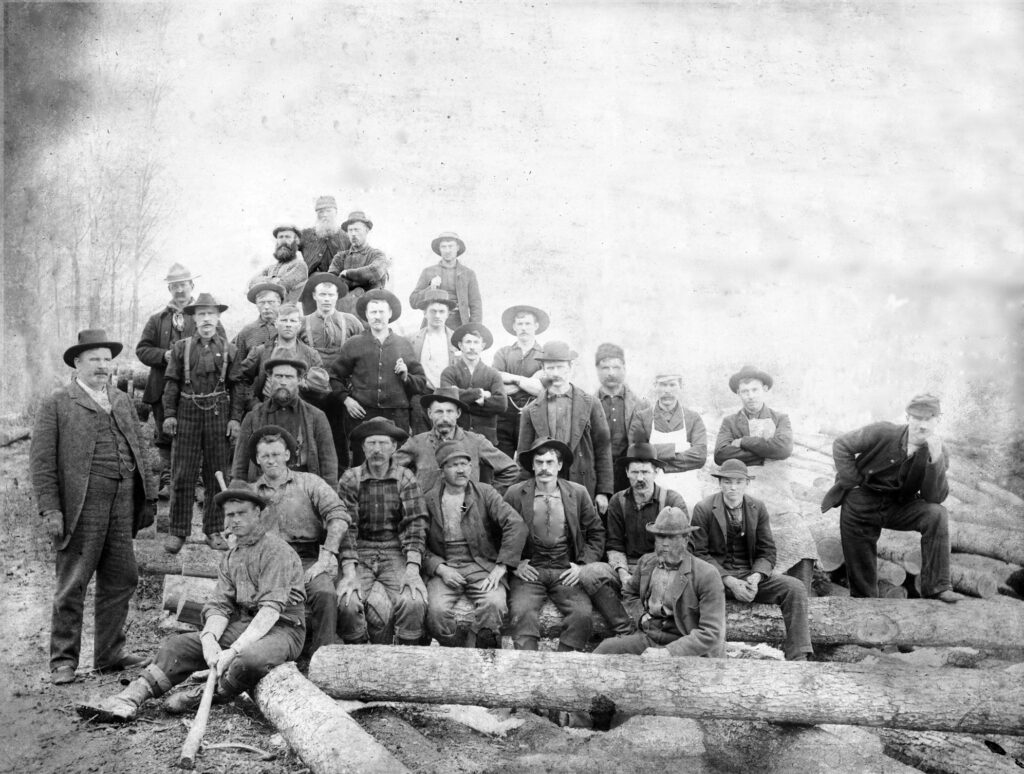The Story of Mike Carlin

Have you ever seen the book called “Sawdust Caesars” by Denis Marshall? It’s the story of the lumbering in the Salmon Arm area. The reason that I’m sharing this information is that many of the key players in the saga were once residents of Golden. In fact, the key to all of the Golden success in this story is Mike Carlin.
Mike Carlin was born in Quebec in 1856, and like many of the day, was compelled to head west to find his fortune. Young Mike began operating a small tie mill for the CPR as they were pushing the rail across the last stretch of mountains. It was at his camp near Lake Louise that the beginning – of the end – of “the Cache” took place.
Mike, believing that his camp would be a town of note someday, changed its name from “Carlin Camp” to Silver City. When the news of the change reached the railhead, a group of men sitting around a table said “We’ll not let the likes of that upstart Mike Carlin get the best of us.” “Gold is worth more that silver, so let’s change the name of our camp from the Cache to Golden City.”
A couple of years later, the post office dropped “City” from the name and it became Golden. This was just one of the many ways that Carlin contributed to our community before he moved on.
Here are several quotes from the book, with permission from the author. Those of you who are interested in the history of the Columbia River Lumber Company should go to the bookstore or the public library and ask for a copy. It’s a fine, well-researched story with lots of interesting pictures, many from Golden.
“Genesis of a Lumber Giant – Mike Carlin, described at the time as a contractor ad trader – and four associates put together the Golden Lumber Company Ltd., on Nov 8, 1893, with a capital value of $100,000, divided into 1000 shares. One of the partners was Captain Frank Armstrong, pioneer steamboat operator on the upper Columbia River. The other principals were Thomas B.H. Cochrane of Mitford, in the District of Alberta, Samuel Barber, a Calgary banker, and James Ferguson Armstrong. A Golden accountant. The company operated sawmills at Golden and Beaver, having built a processing plant in 1891 in southeast Golden with river access.
Two months previously, Mike Carlin was reported to have secured 10 square miles of the timber limber limits across the Columbia River, estimated to yield 100 million board feet of lumber. Shareholders of Golden Lumber Company subsequently approved a takeover offer from the Columbia River Lumber Company in January 1898.
Captain Armstrong’s vagabond spirit next took him north, where he applied for a license to cut timber on Lake Lindemann in January 1899, in a spin-off venture connected to the Yukon gold rush. The Captain, in 1887, at 12 mile toward Parson, had established the first sawmill in the Columbia Valley.
Columbia River Lumber Company Limited, “the old company,” was incorporated in 1889 under the Dominion’s Companies Act with a declared value of $30,000, divided into 300 share of $300 each.
The capital increased by supplementary Letters Patent, dated June 7, 1892, to the sum of $250,000 divided into 2,500 shares. In 1901, a “new” limited company was formed under the same name, but incorporated under the laws of British Columbia, capitalized at $750,000 in shares.
On Feb. 20, 1901, the shareholders of the old company unanimously agreed to a takeover by the new company for $750,000 in fully paid up shares. William McKenzie, president, and secretary F.W. Jones, signed on behalf of the old company, while the two signatories for the new entity were MacKenzie and Hugh Sutherland, now acting as secretary.”
This book covers all parts of the valley and includes some of our most well-known characters such as Dartt and Patterson, the McRaes, Pat Burns, the Robinsons and the Rosses. It’s a wealth of information on lumbering in the interior of British Columbia.
